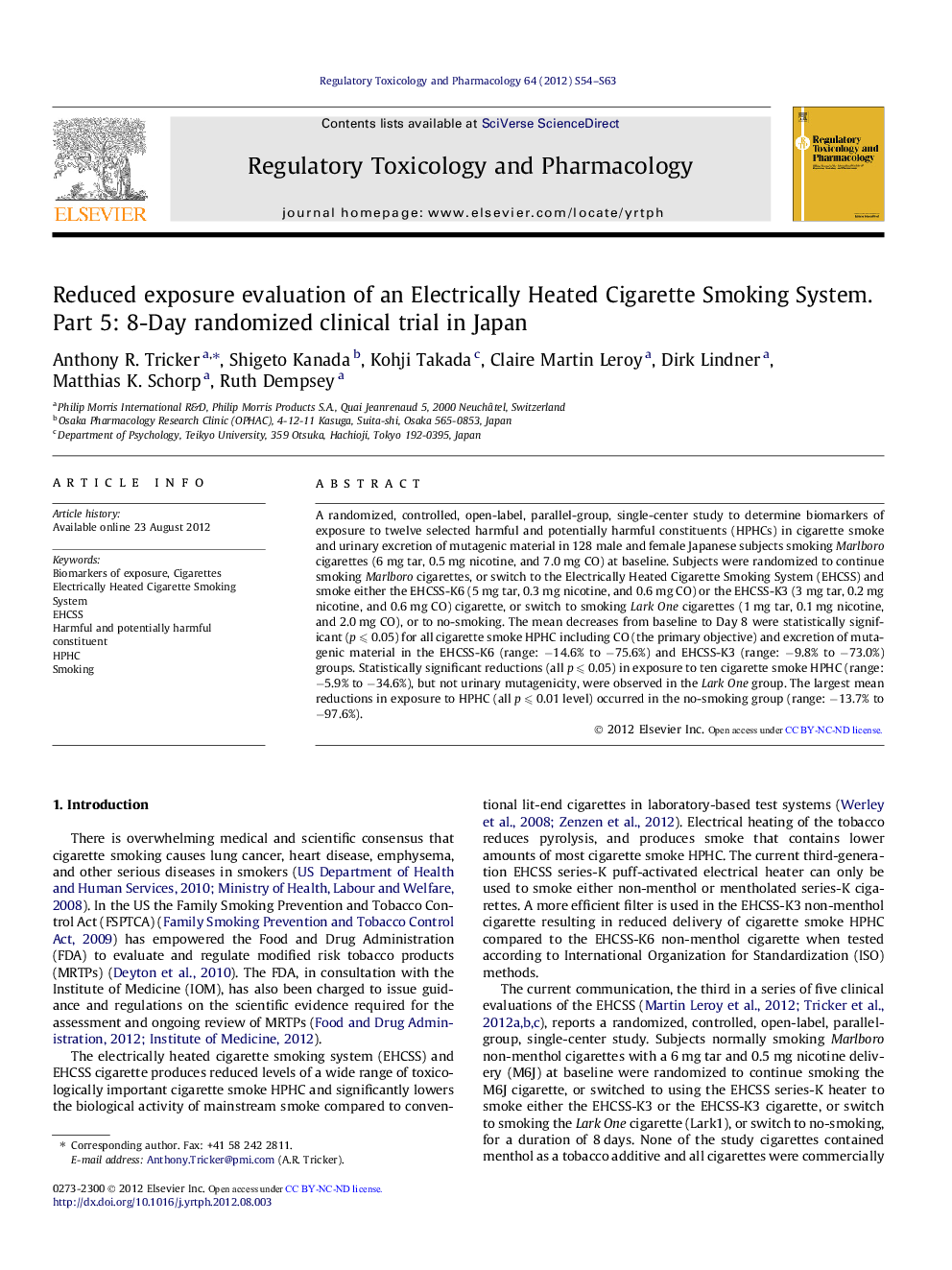| Article ID | Journal | Published Year | Pages | File Type |
|---|---|---|---|---|
| 5857003 | Regulatory Toxicology and Pharmacology | 2012 | 10 Pages |
A randomized, controlled, open-label, parallel-group, single-center study to determine biomarkers of exposure to twelve selected harmful and potentially harmful constituents (HPHCs) in cigarette smoke and urinary excretion of mutagenic material in 128 male and female Japanese subjects smoking Marlboro cigarettes (6 mg tar, 0.5 mg nicotine, and 7.0 mg CO) at baseline. Subjects were randomized to continue smoking Marlboro cigarettes, or switch to the Electrically Heated Cigarette Smoking System (EHCSS) and smoke either the EHCSS-K6 (5 mg tar, 0.3 mg nicotine, and 0.6 mg CO) or the EHCSS-K3 (3 mg tar, 0.2 mg nicotine, and 0.6 mg CO) cigarette, or switch to smoking Lark One cigarettes (1 mg tar, 0.1 mg nicotine, and 2.0 mg CO), or to no-smoking. The mean decreases from baseline to Day 8 were statistically significant (p ⩽ 0.05) for all cigarette smoke HPHC including CO (the primary objective) and excretion of mutagenic material in the EHCSS-K6 (range: â14.6% to â75.6%) and EHCSS-K3 (range: â9.8% to â73.0%) groups. Statistically significant reductions (all p ⩽ 0.05) in exposure to ten cigarette smoke HPHC (range: â5.9% to â34.6%), but not urinary mutagenicity, were observed in the Lark One group. The largest mean reductions in exposure to HPHC (all p ⩽ 0.01 level) occurred in the no-smoking group (range: â13.7% to â97.6%).
⺠Electrically heated cigarette smoking system compared to conventional cigarettes. ⺠Mainstream smoke constituents reduced in electrically heated cigarettes. ⺠Biomarkers of exposure confirmed reduced exposure in a randomized clinical trial. ⺠Reductions in exposure to selected smoke constituents approach smoking cessation. ⺠No clinically relevant adverse effects observed.
